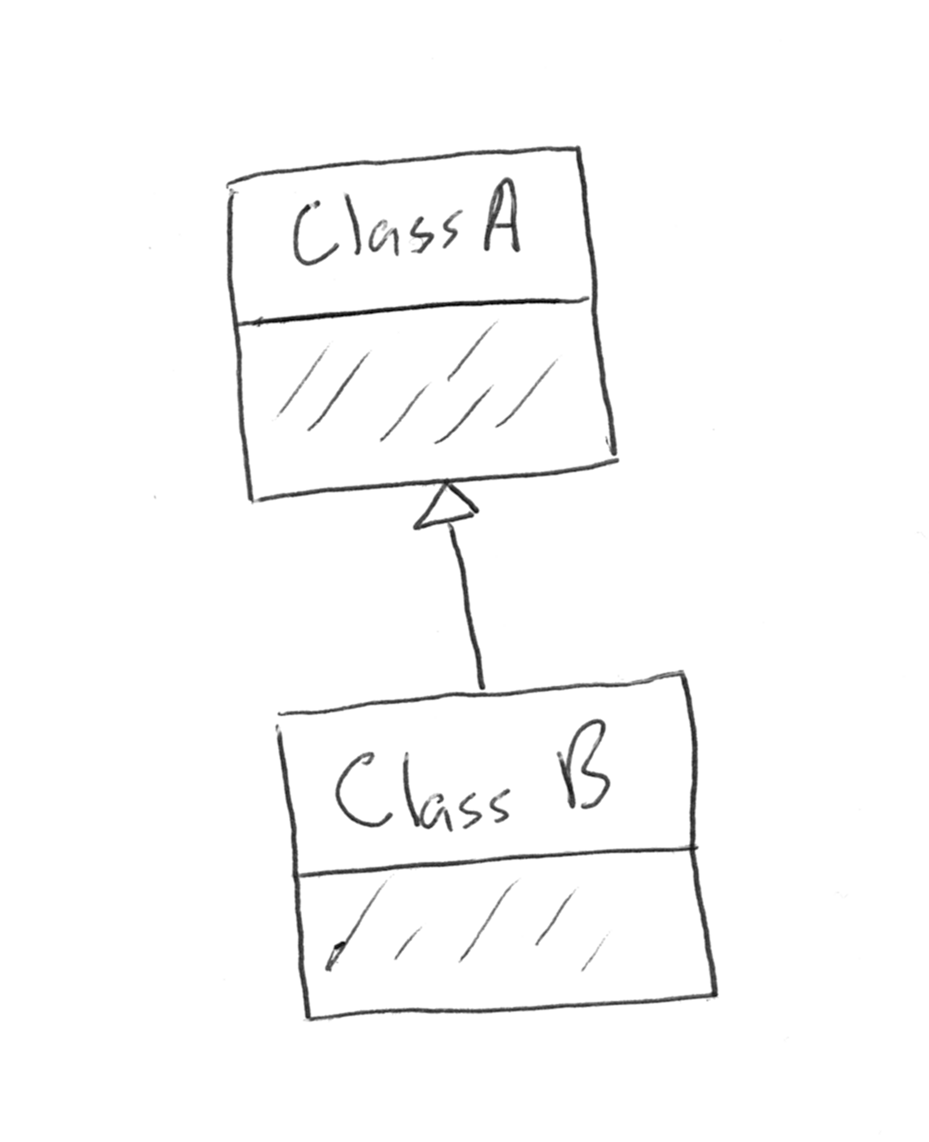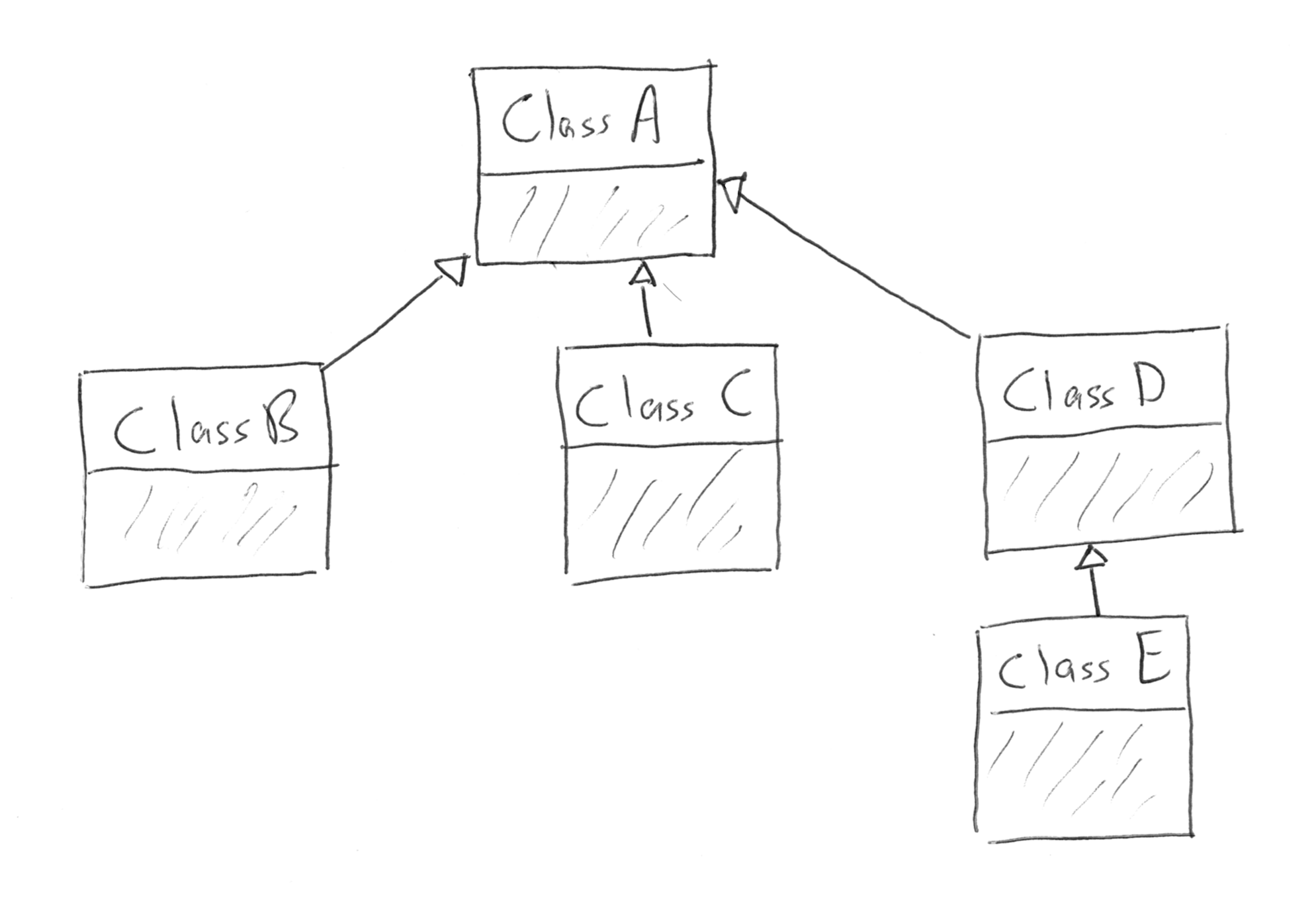Inheritance in C#
Let’s examine an inheritance relationship between two classes: Cat and HouseCat. HouseCat is a class that inherits from Cat, so HouseCat receives the data and behaviors of Cat. These inherited traits are things like fields, properties, and methods. Any fields and non-constructor methods in Cat are available to each instance of HouseCat.
When we speak about an inheritance relationship, we say that a HouseCat is a Cat, or extends Cat. In order to define a class that inherits from another, we use the : syntax.
| |
We say that HouseCat is a subclass, derived class, or child class of Cat, and we say that Cat is the superclass, base class, or parent class of HouseCat.
In C#, a class may extend only one class. Classes may extend each other in turn, however. This creates hierarchies of classes. We often visualize these by drawing each class as a box, with an arrow pointing from the subclass to the base class. The image below show that B extends A.

The shaded portion of these boxes can include additional information about each class. We’ll learn about what we might put here in a little bit.
Inheritance is an essential mechanism for sharing data and behavior between related classes. Using it effectively creates organized code with groups of classes that have increasingly specialized behavior.
When this happens, we can visualize the inheritance structure with a slightly more complex diagram.

You can see that classes B, C, and D all extend class A. And class E extends class D which itself extends class A. So class E involves an even greater specialization of behavior than class D.
Fields and non-constructor methods are directly available to instances of the subclass, subject to any access modifiers. In general, this means that private and internal members of a base class are not accessible to a subclass. However, if the subclass and base class are in the same assembly, internal allows access to a member.
If anything in the last paragraph was fuzzy, this is a good time to review access modifiers in C# .
Check Your Understanding
Which of the following is NOT a term for one class that extends another:
- subclass
- derived class
- extension class
- child class
A class, Greeting, extends another class, Message. By convention, how would we represent the relationship between these classes in a diagram?
- two boxes with an arrow pointing from
GreetingtoMessage - two boxes with an arrow pointing from
MessagetoGreeting - two boxes with
Greetingpositioned inside ofMessage - two boxes with
Greetingpositioned directly beneathMessage